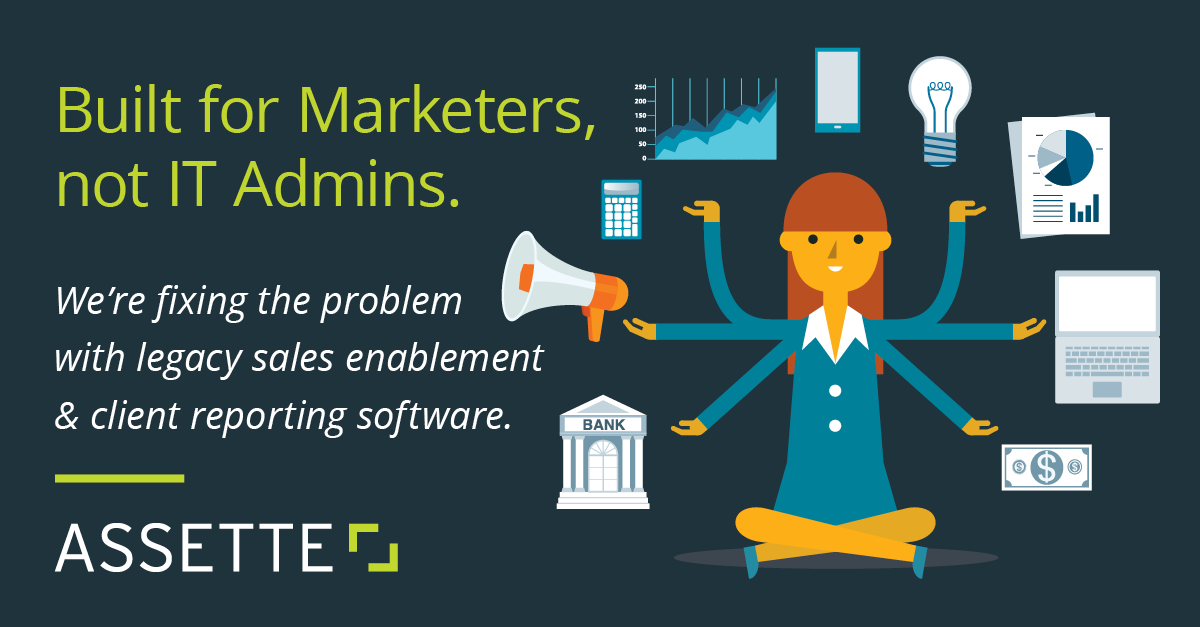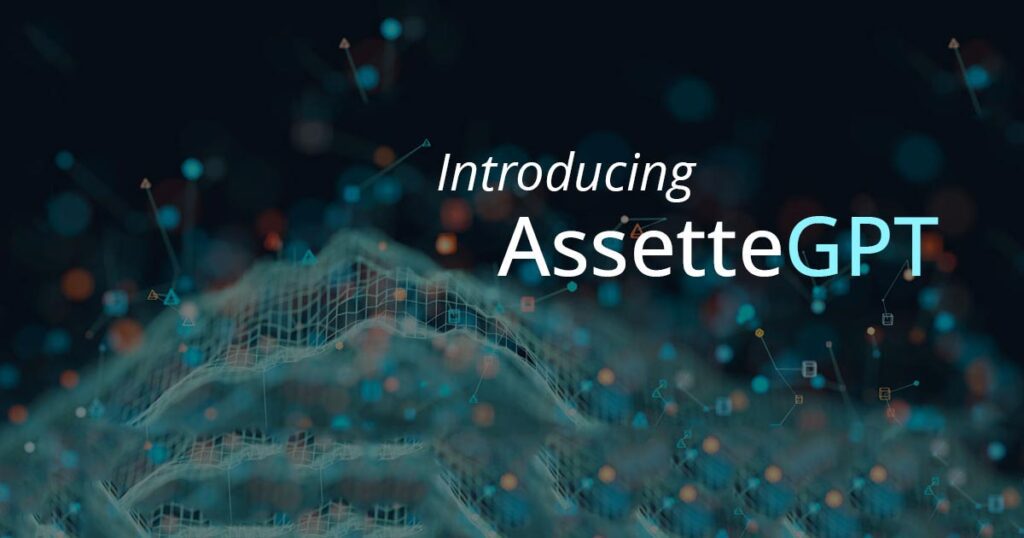What’s the true cost of your sales enablement and reporting software? Hint: it’s not on the invoice.
Imagine it’s 5 PM on Friday. Sales needs a pitchbook with updated performance and region-specific disclaimers by Monday morning for a $250M prospect. Marketing’s ready to help. But the system admin who knows how to tweak the template? Out of office. Now what?
Most enterprise reporting and sales enablement systems quietly come with a hidden cost: full-time employees whose job is to keep them running. That’s not a feature. That’s a failure.
Systems like Seismic, along with many of the reporting tools used in asset management, require you to build business logic using developer-style scripting. Want this one specific presentation to vary from the others? Ticket. Mapped fields, conditional logic? Ticket. Region-specific disclosures or language requirements? Oh, you better believe that’s a ticket.
This begs the question*: if your marketing team can’t update a chart layout or disclosure without involving a developer, who is the system really built for? Would you buy a smartphone that requires IT to install an app? Then why tolerate such restriction for your content tools?

Built-In Bottlenecks Aren’t a Feature
Sure, maybe you do have a dedicated admin. Great. But what does that actually buy you besides a translator between marketing and the software they spend countless hours using?
Every time you need a chart updated, a disclaimer tweaked, or a new region-specific version, you’re filing a ticket and waiting in line. You’re not running a marketing team. You’re juggling a help desk just to maintain your sales enablement system.
And what happens when your admin is out sick? Or leaves? Or gets promoted? Suddenly your whole content pipeline grinds to a halt because no one else knows how things work under the hood. That’s not a very compelling vision of automation.
The Hidden Admin Tax
This isn’t just about one salary – it’s about the systemic waste. It’s about marketing hours spent waiting for small changes, deals slowed down because materials aren’t approved, and launch cycles held hostage by internal complexity.
Some larger firms require as many three full-time employees just to keep their “automated” sales enablement and client reporting platform alive system alive. That’s before you factor for your various opportunity costs of a semi-automated solution: competitors beating you to the punch, delays souring deals or dinging credibility.
Legacy by Design
What causes all these headaches? Most of these vendors are huge – I’m hardly saying their sales enablement software aren’t compelling. Asset management just isn’t in their DNA. It was built to be flexible enough for any industry. With a conventional go-to-market strategy and sales enablement materials that creep along gradually. Not the type that change dramatically every four months. I’ve worked in b2b marketing for almost twenty years. I’ve pulled the trigger on plenty of vendors. I don’t think I’ve ever seen a disclosure or forward looking statement during a discovery call. That’s all I’m saying.
They also tend to assume your data is already perfectly curated. Centralized. Ready to plug in. But that’s scarcely the reality. Asset managers are selling data. It’s complex, frequently changing, and intensely regulated. This is a big departure from product benefits, case studies, or ROI calculators.
So what happens when a general-purpose system meets complexity at the scale asset management firms are dealing with? It collapses into custom workflows and human intervention.
The Control Paradox
You’ve probably heard the argument: “We need admins in place for control and compliance.” But do these sorts of intentional bottlenecks really reduce risk? When your compliance team needs to verify disclaimers or performance disclosures, do they want to wait for an admin to rerun documents? Or would they rather review real-time outputs with built-in guardrails?
Control doesn’t mean locking down every change. It means building a system that only allows compliant outputs by design.
A Better Approach

What does better even look like? It starts by embedding 25 years of asset management experience into the system. That’s what we’ve done at Assette.
With us, you’ll stream data directly from your trusted sources – no separate warehouse needed.
Your marketers will use familiar Microsoft Office tools to build and configure content with no coding. They’ll set up custom guardrails that preserve branding and ensure compliance—while giving sales and client service the freedom to tailor content themselves (see how this compares to other tools).
By building reusable components across the breadth of the client lifecycle, they become exponentially more valuable over time. Each new piece of content gets easier to produce.
Yes, of course, you’ll need some IT guidance to get up and running. And data work is still best done by data professionals. But once it’s off the ground, IT and data teams can move on to other projects. They’re free. And marketing is finally free to steer the ship.
The ROI Reality
The true cost of an admin-centric system isn’t just salary. It’s the time your marketers spend waiting instead of working. The deals that slow down because the right materials weren’t ready. The money you spend on additional tools just to patch gaps in the system you already bought.
You won’t find that on a licensing invoice. But make no mistake: it’s a six-figure problem for most firms. And it compounds every quarter you delay fixing it.
Reclaim Your Resources
Ask yourself: How much of your marketing budget is spent silently propping up tools that were never meant for your industry?
Then ask us how to get that budget back.
*90% of the time people** use the phrase “begging the question,” they’re not actually begging the question. In logic, it’s a fallacy where the conclusion is assumed in the premise. “This system is the best because it’s better than all the others”? That’s not an argument—it’s a closed loop. Not to go all fifth grade presentation here, but Merriam Webster has a good explanation, if you want to go full pedant.
Yes, I’m very fun at parties.
**It’s me. I’m people.



